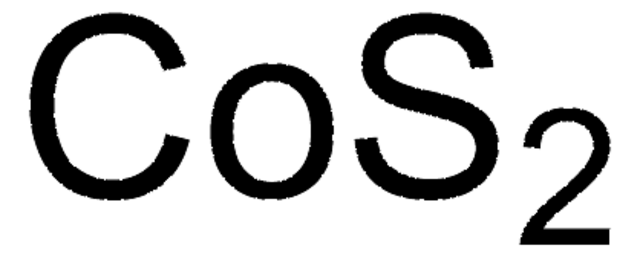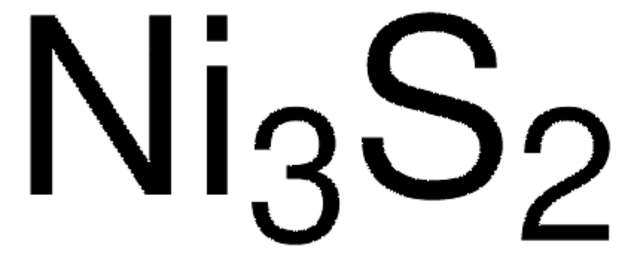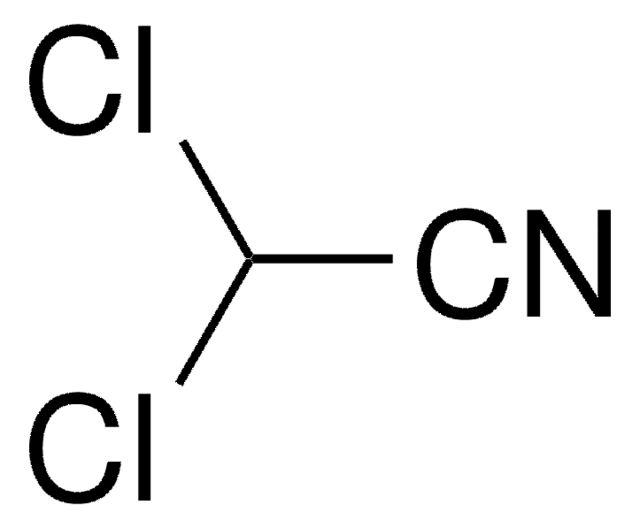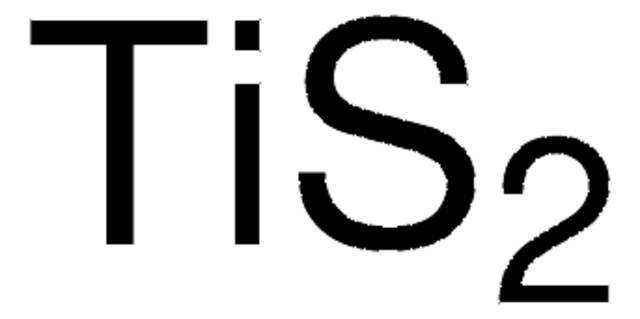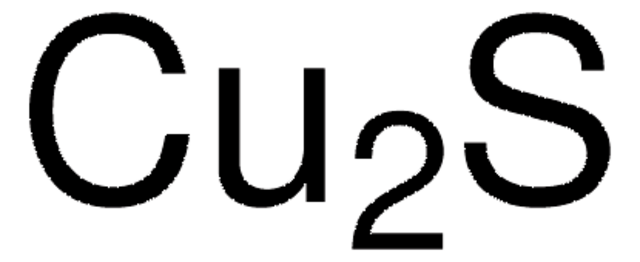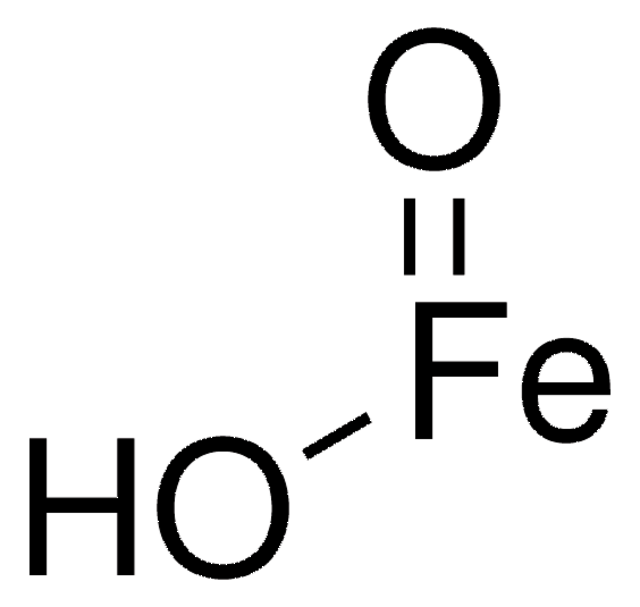778117
Iron disulfide
powder, −325 mesh, 99.8% trace metals basis
Sinónimos:
Ferrous disulfide
Iniciar sesiónpara Ver la Fijación de precios por contrato y de la organización
About This Item
Fórmula empírica (notación de Hill):
FeS2
Número de CAS:
Peso molecular:
119.98
EC Number:
UNSPSC Code:
12352300
NACRES:
NA.23
Productos recomendados
Quality Level
assay
99.8% trace metals basis
form
powder
reaction suitability
reagent type: catalyst
core: iron
particle size
−325 mesh
mp
450 °C (lit.)
application(s)
battery manufacturing
InChI
1S/Fe.S2/c;1-2/q+2;-2
InChI key
NIFIFKQPDTWWGU-UHFFFAOYSA-N
Categorías relacionadas
Application
Iron Disulfide has attracted significant interest as a material for photovoltaics(1) and lithium ion battery cathodes(2). Iron disulfide is also studied as a potential material for the sequestration of environmental contaminants(3).
Storage Class
11 - Combustible Solids
wgk_germany
WGK 3
flash_point_f
Not applicable
flash_point_c
Not applicable
Elija entre una de las versiones más recientes:
¿Ya tiene este producto?
Encuentre la documentación para los productos que ha comprado recientemente en la Biblioteca de documentos.
Los clientes también vieron
M Oggerin et al.
Environmental microbiology, 15(8), 2228-2237 (2013-02-22)
Río Tinto (Huelva, southwestern Spain) is an extreme environment with a remarkably constant acidic pH and a high concentration of heavy metals, conditions generated by the metabolic activity of chemolithotrophic microorganisms thriving in the rich complex sulfides of the Iberian
Jose M Nieto et al.
Environmental science and pollution research international, 20(11), 7509-7519 (2013-04-17)
Acid mine drainage in the Iberian Pyrite Belt is probably the worst case in the world of surface water pollution associated with mining of sulphide mineral deposits. The Iberian Pyrite Belt is located in SW Iberian Peninsula, and it has
Mario Vera et al.
Proteomics, 13(7), 1133-1144 (2013-01-16)
Acidithiobacillus ferrooxidans is a chemolithoautotrophic, mesophilic Gram-negative bacterium able to oxidize ferrous iron, sulfur, and metal sulfides. It forms monolayer biofilms where extracellular polymeric substances are essential for cell attachment and metal sulfide leaching. High-throughput proteomics has been applied to
Jiri Kucera et al.
Antonie van Leeuwenhoek, 103(4), 905-919 (2013-01-08)
In contrast to iron-oxidizing Acidithiobacillus ferrooxidans, A. ferrooxidans from a stationary phase elemental sulfur-oxidizing culture exhibited a lag phase in pyrite oxidation, which is similar to its behaviour during ferrous iron oxidation. The ability of elemental sulfur-oxidizing A. ferrooxidans to
Zenghui Diao et al.
Water research, 47(13), 4391-4402 (2013-06-15)
Acid mine drainage (AMD) resulting from the oxidation of pyrite and other metal sulfides has caused significant environmental problems, including acidification of rivers and streams as well as leaching of toxic metals. With the goal of controlling AMD at the
Nuestro equipo de científicos tiene experiencia en todas las áreas de investigación: Ciencias de la vida, Ciencia de los materiales, Síntesis química, Cromatografía, Analítica y muchas otras.
Póngase en contacto con el Servicio técnico